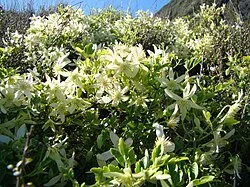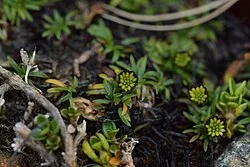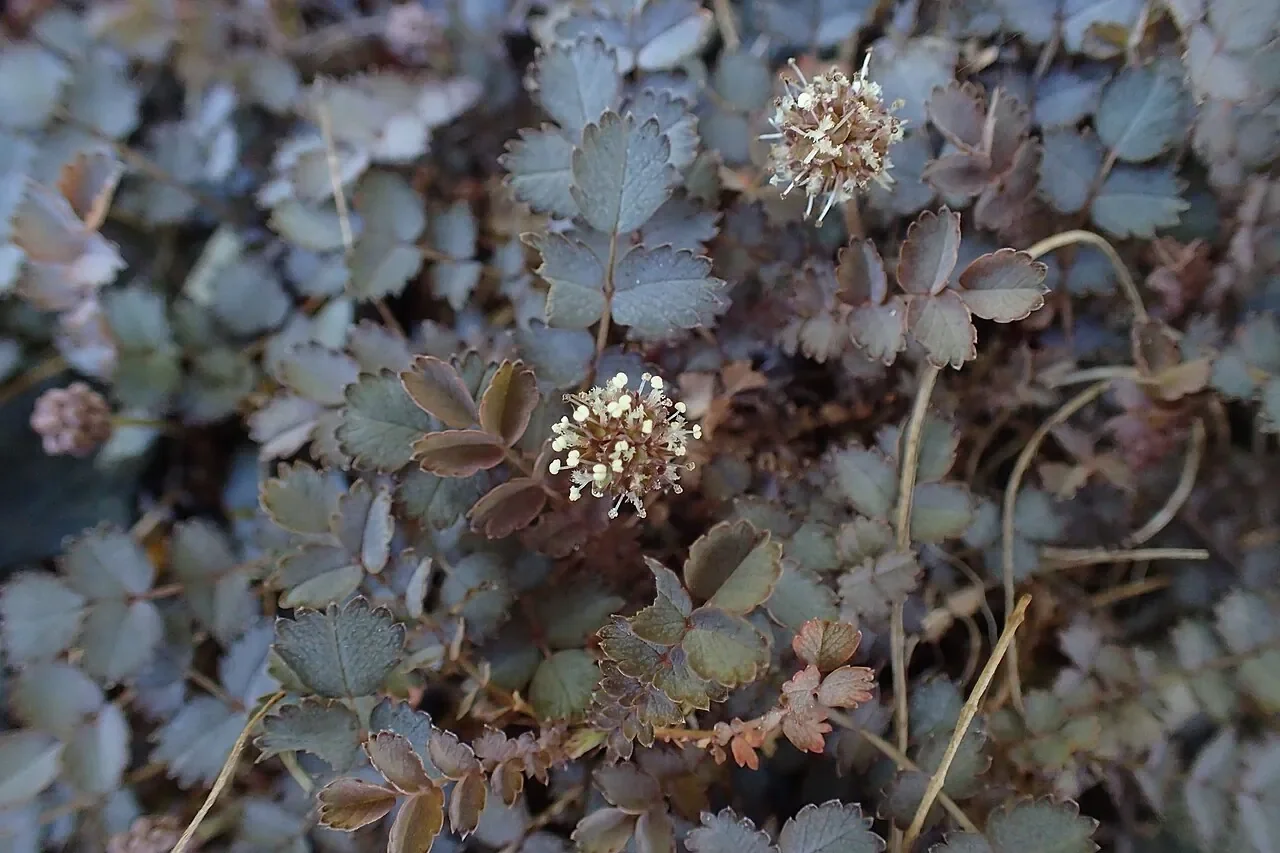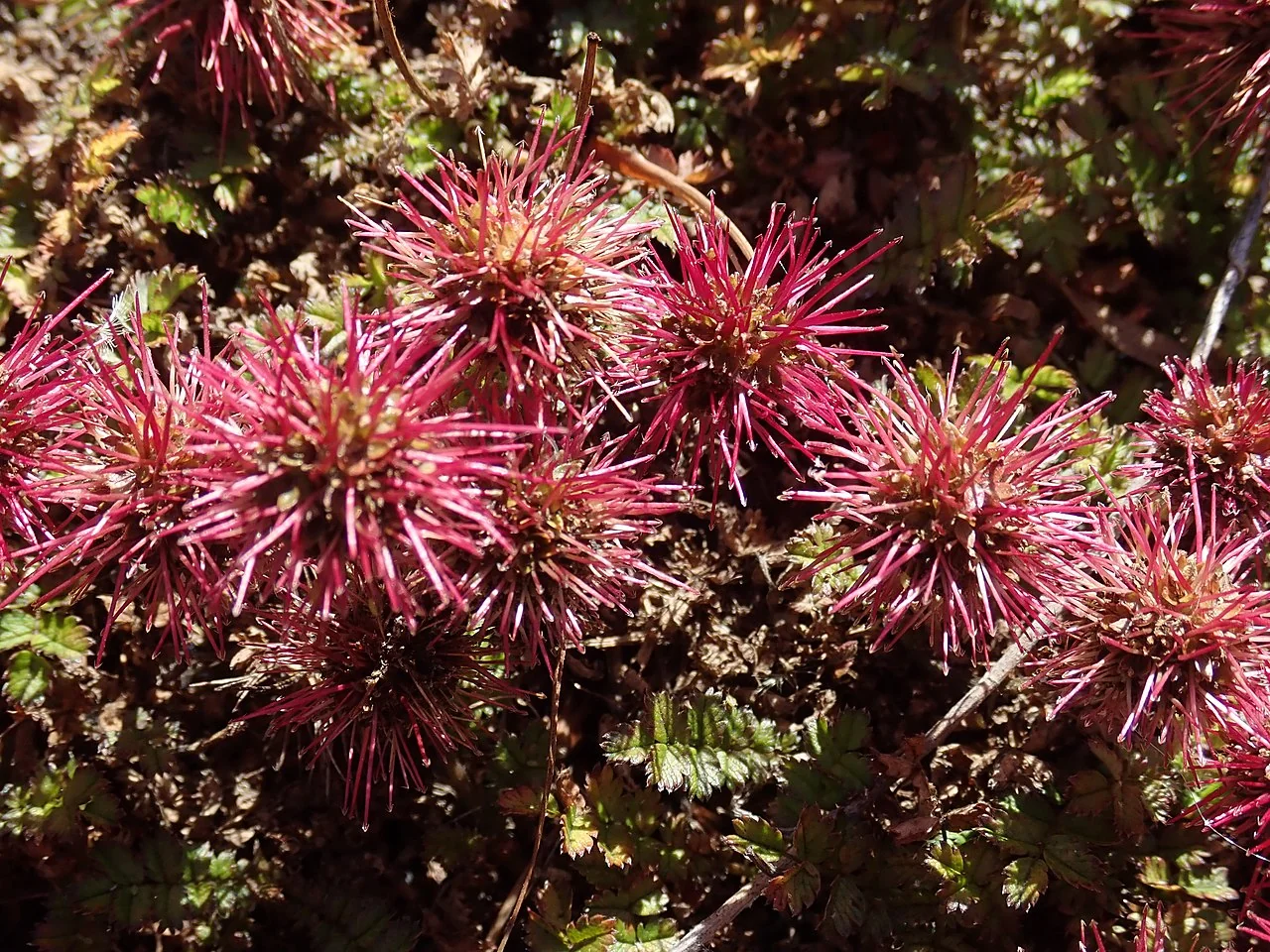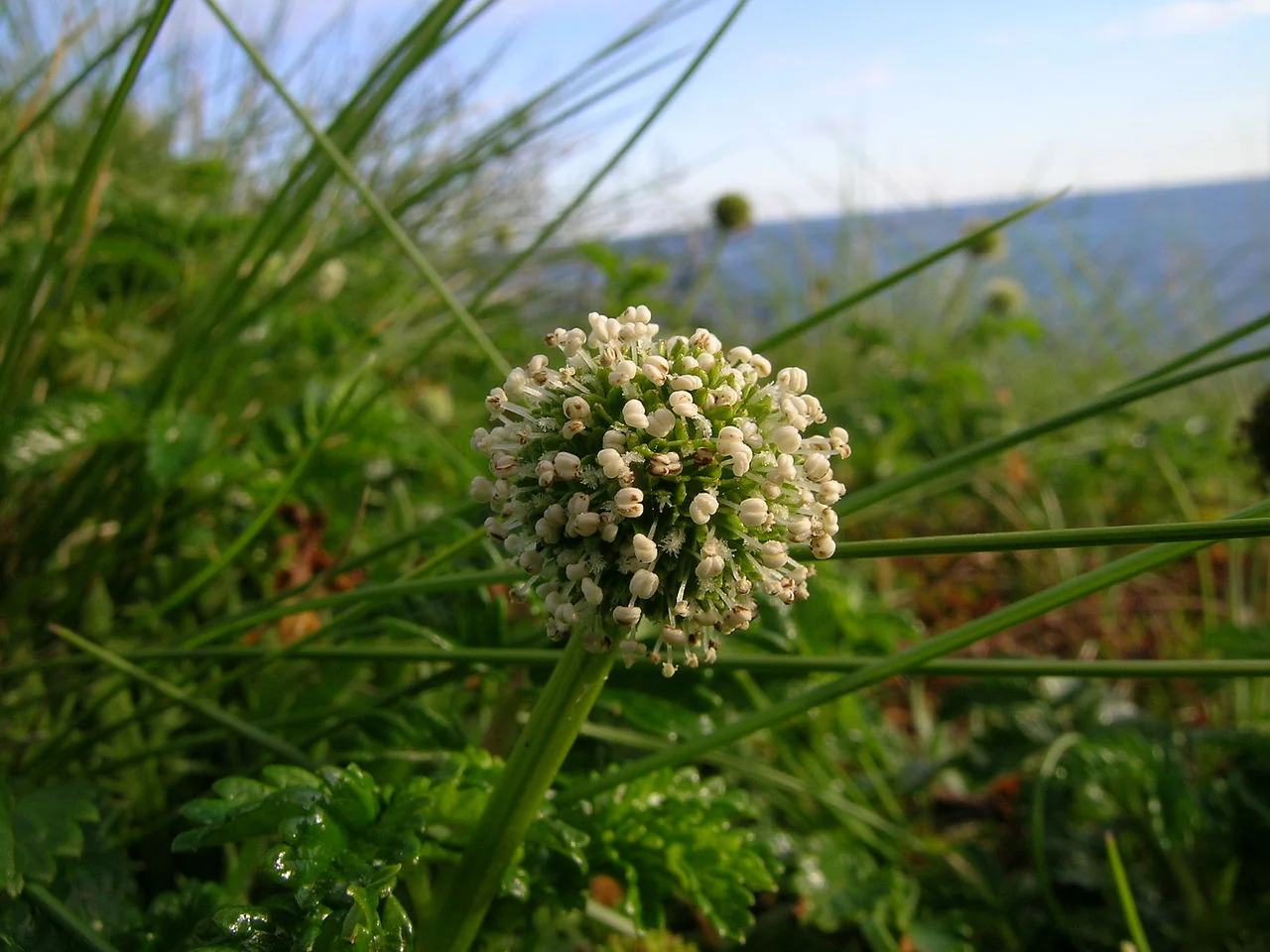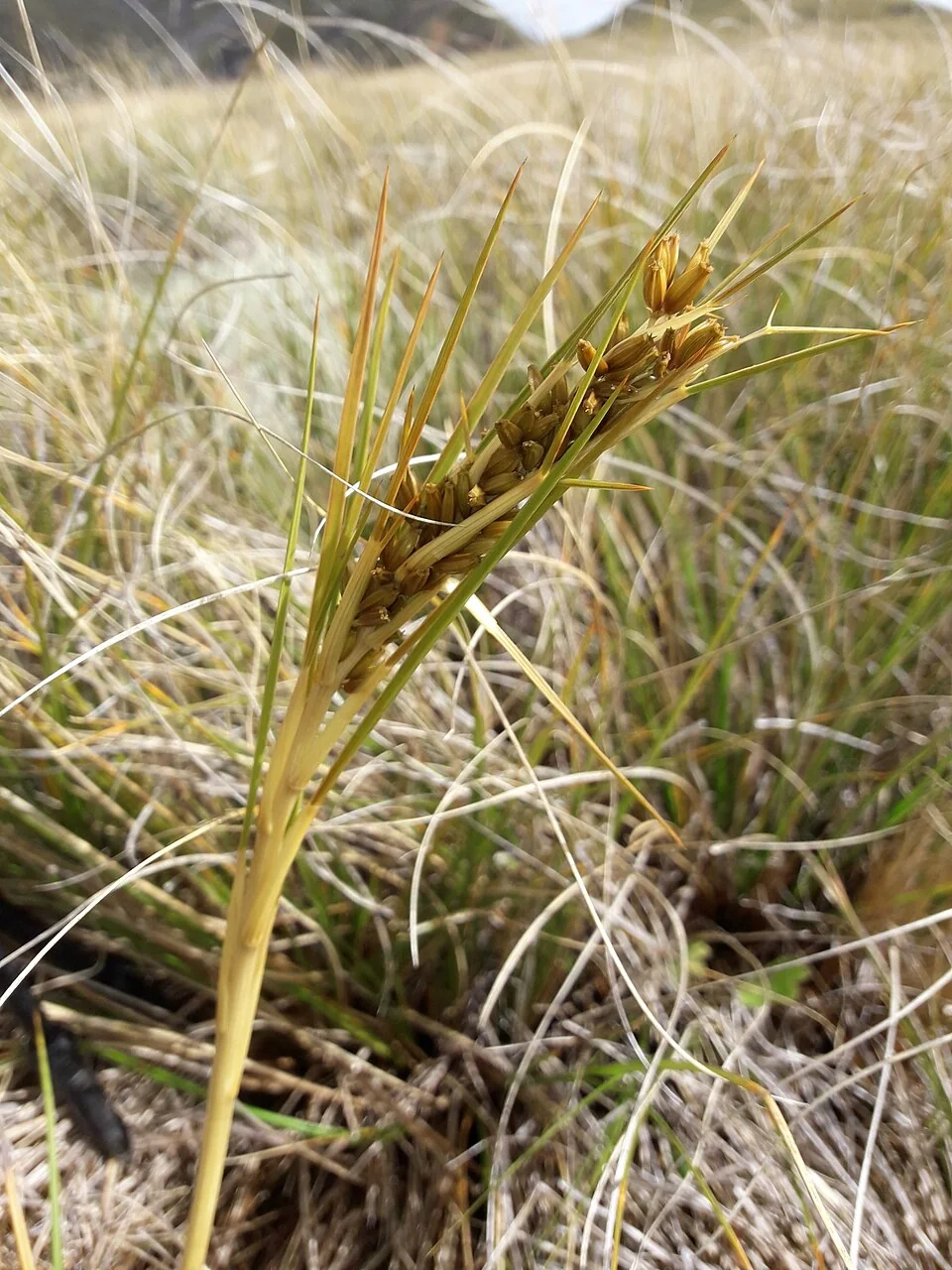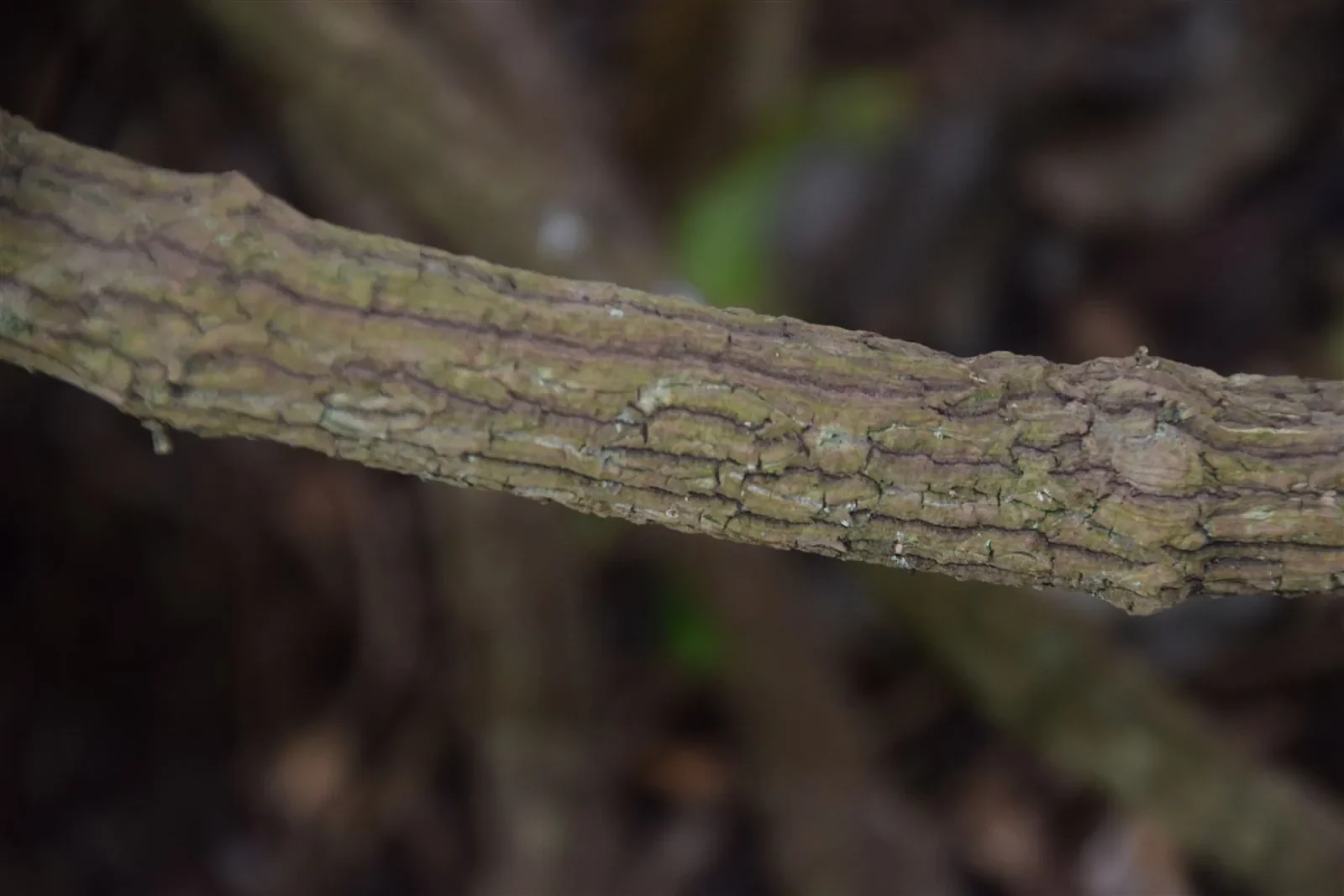
Puawānanga
Clematis paniculata
Clematis paniculata , commonly known as Sweet Autumn Clematis, is a vigorous, deciduous climbing vine among New Zealand's native climbers celebrated for its abundant late-season blooms and sweet fragrance. From late summer to fall, it produces masses of small, starry, creamy-white flowers, about 1 inch (2.5 cm) across. These blooms are highly fragrant and so profuse they can completely cover the foliage. A fast-growing and robust climber, it can reach lengths of 20-30 feet (6-9 meters) in just a few seasons. After the flowering period, the vine remains attractive with fluffy, silvery, plume-like seed heads that provide visual interest into winter. Sweet Autumn Clematis thrives in moist, well-drained soil and prefers full sun to partial shade. It belongs to Clematis Group 3, meaning it flowers on new wood and should be hard pruned in late winter or early spring.

Plant Description
Clematis paniculata , commonly known as Puawānanga or Sweet Autumn Clematis, is a vigorous, deciduous climbing vine endemic to New Zealand. It is celebrated for its abundant late-season blooms, producing masses of small, starry, creamy-white flowers from late summer to early fall. These highly fragrant flowers can completely cover the foliage, creating a spectacular display. After flowering, the vine remains attractive with fluffy, silvery, plume-like seed heads that provide visual interest into winter. This fast-growing climber can reach lengths of 6-9 meters and thrives in moist, well-drained soil, preferring full sun to partial shade.
Quick Facts
| Scientific Name | Clematis Paniculata |
|---|---|
| Height | 5-10 m (climbing) |
| Spread | 3-5 m |
| Water Needs | Moderate |
| Light | Part shade to full sun |
| Frost Tolerance | Good |
| Salt Tolerance | Poor |
| Growth Rate | Fast |
| Lifespan | Long |
Climate Best Suited to
Puawānanga ( Clematis paniculata ) is remarkably adaptable across New Zealand's diverse climates, naturally occurring from coastal areas to montane regions up to 1000 m elevation. This hardy native climber thrives in areas with consistent moisture and moderate humidity, performing best in temperate conditions with mild winters and warm, not hot, summers. It prefers climates that provide regular rainfall or reliable irrigation, as consistent moisture is crucial for healthy growth.
Regional Suitability
| City | Climate Suitability |
|---|---|
| Whangārei | Ideal |
| Auckland | Ideal |
| Hamilton | Ideal |
| Tauranga | Ideal |
| Rotorua | Ideal |
| Gisborne | Ideal |
| New Plymouth | Ideal |
| Napier | Ideal |
| Whanganui | Ideal |
| Palmerston North | Ideal |
| Wellington | Ideal |
| Nelson | Ideal |
| Christchurch | Ideal |
| Dunedin | Ideal |
| Invercargill | Ideal |
Natural Habitat
Puawānanga ( Clematis paniculata ) is a native New Zealand climbing plant found throughout the country, particularly in the North Island and northern South Island. It thrives in lowland forests to montane regions, especially along forest margins and in clearings. It is also found in coastal areas and shrubland. This robust, high-climbing vine prefers damp, well-drained soil and can tolerate a range of soil types, from clay to sandy, and even coastal conditions with salt spray. While it can tolerate full sun, it thrives optimally in partial sun conditions, benefiting from filtered and dappled sunlight, which aligns with its natural woodland margin habitat. Puawānanga is often seen climbing high into tree canopies to reach sunlight.
Plant Conservation
Clematis paniculata , also known as Sweet Autumn Clematis, presents a dual conservation status depending on its geographical location. In its native New Zealand, Clematis paniculata is an endemic species, widespread in forests across the North, South, and Stewart Islands. It is currently classified as "Not Threatened" in its natural habitat. However, it faces threats from diseases such as rusts and the Cucumber mosaic virus. The Cucumber mosaic virus is particularly concerning as it can infect both the Clematis paniculata plant and its host trees, leading to a significant decline in plant numbers. Conversely, in many regions where it has been introduced, particularly in the United States, Clematis paniculata is considered an invasive species. It is listed in the Invasive Plant Atlas of the United States and has been identified as invasive in at least 10 states. This plant spreads aggressively through seeds and vegetative means, forming dense mats that can outcompete and smother native vegetation, including trees and shrubs. Its vigorous growth disrupts native ecosystems, reduces biodiversity, and can lead to habitat degradation. Due to its invasive nature, it is recommended to avoid cultivating this plant in affected areas and to consider removing it to prevent further spread. Native alternatives, such as Clematis virginiana (Virgin's Bower), are suggested for planting in these regions.
Growing Requirements
Soil Requirements
Puawānanga ( Clematis paniculata ) requires permanently damp but well-draining soil and will not survive if roots become completely dried out. The plant adapts to various soil types but performs best in rich, organic soils with good moisture retention. Excellent drainage is essential to prevent waterlogged conditions that can lead to phytophthora root rot.
- Permanently damp but well-draining soil essential
- Prefers rich, organic soils with good structure
- Avoid waterlogged conditions to prevent root rot
- Tolerates a range of soil pH levels
- Benefits from deep organic mulch to retain moisture
Light Requirements
Puawānanga ( Clematis paniculata ) performs best when it can grow up through other plants to reach sunlight while keeping its base in shade. Like many forest climbers, it prefers to have its roots cool and shaded while the flowering portions reach full sun or bright partial shade. This mirrors its natural forest edge habitat.
- Full sun to partial shade for flowering portions
- Prefers cool, shaded root zone
- Grows naturally from shade into sunny positions
- Benefits from growing through other plants for support
Water Requirements
Consistent moisture is absolutely critical for Puawānanga ( Clematis paniculata ) - this is the most important factor for success. The plant will not survive if roots become dried out, so regular watering and moisture conservation through mulching are essential. Maintain year-round moisture, especially during dry spells and hot weather.
- Never allow roots to completely dry out
- Requires consistent moisture year-round
- Deep organic mulch essential for moisture retention
- Regular watering during dry periods crucial
- Avoid overhead watering to prevent fungal issues
Planting Guide
When to Plant
The best time to plant Puawānanga ( Clematis paniculata ) is during autumn or spring. This allows the plant to establish its root system in cooler, moister conditions before the extremes of summer heat or winter cold. In milder climates, it can be planted year-round, but always avoid planting during periods of frost or drought.
How to Plant
Choose a site with full sun to partial shade, ensuring the roots remain cool and shaded. Dig a hole twice the width of the root ball and just as deep. Amend the excavated soil with compost and sheep pellets for improved fertility and drainage. Carefully remove the plant from its container, being gentle with the roots. Place the plant in the hole, ideally planting it about 5cm deeper than it was in the pot to help keep the root crown cool. Backfill with the amended soil, gently firming it around the base. Water thoroughly immediately after planting to settle the soil and eliminate air pockets. Apply a layer of organic mulch around the base to conserve moisture, suppress weeds, and maintain cool root temperatures. Provide a sturdy support structure like a trellis, fence, pergola, or allow it to climb through existing trees and shrubs. Avoid placing fertilizer directly into the planting hole; instead, apply a native plant fertilizer to the soil surface after planting.
Ecological Role
Clematis paniculata , also known as puawānanga in Māori, plays a multifaceted ecological role depending on whether it is in its native New Zealand habitat or in regions where it has been introduced.
In Its Native New Zealand:
- Habitat: It is widespread in lowland and subalpine forests, growing in tall forest or shrubland between 300 and 800 meters above sea level. It is an evergreen woody high-climbing vine that can reach a diameter of 10 cm or more at its base.
- Growth Habit: The vine climbs other trees to reach sunlight, preferring damp but not waterlogged soils and sunny areas.
- Pollination: Its flowers are unisexual, meaning there are separate male and female plants, and they attract pollinators like bees and butterflies.
- Seed Dispersal: Its seeds are easily dispersed by wind due to their silky, feather-like clusters.
In Introduced Regions:
- Invasive Potential: In areas where Clematis paniculata has been introduced, it can become an invasive species. It spreads aggressively both by seed and vegetatively, meaning even small fragments can root and form new plants.
- Competition: Its vigorous growth allows it to cover and outcompete native vegetation, including trees and shrubs, leading to the displacement and alteration of native plant communities. This can degrade wildlife habitat, reduce biodiversity, and potentially increase soil erosion.
- Impact: The species is listed in the Invasive Plant Atlas of the United States and has contributed to the decline of endangered and threatened species by competing for resources like moisture, sunlight, nutrients, and space.
Uses and Significance
Garden Uses
- Outstanding for covering fences, pergolas, and arbors
- Excellent screening plant for privacy and wind protection
- Spectacular specimen for growing through large trees
- Perfect for cottage garden and naturalistic designs
- Provides fragrant spring displays that attract beneficial insects
Landscaping Uses
Garden Design Applications
Puawānanga ( Clematis paniculata ) is a highly valued and versatile climber in New Zealand landscaping, primarily celebrated for its spectacular spring display of fragrant white flowers. Its vigorous growth habit makes it ideal for a variety of applications:
- Vertical Coverage: Excellent for growing on trellises, fences, pergolas, walls, and arbors, quickly transforming structures into lush, flowering features.
- Scrambling Plant: Can be trained to scramble through existing trees and shrubs, adding visual impact and a naturalistic feel to garden beds.
- Feature Plant: Its prolific flowering makes it a striking specimen, particularly in spring, drawing attention with its beauty and fragrance.
- Screening: Effectively used to create natural screens for privacy or to conceal unsightly areas.
- Ground Cover: Can also be allowed to sprawl as an attractive ground cover in suitable areas.
- Ecological Benefits: Contributes to garden biodiversity by providing shelter for wildlife and attracting pollinators like bees and other insects.
- Diverse Garden Styles: Suitable for a wide range of garden designs, including native, cottage, and modern styles, and particularly effective in white-themed gardens.
- Urban Gardening: Maximizes vertical space, making it a beneficial choice for smaller urban gardens.
Seasonal Care Calendar
Spring
Spring is the glory season for Puawānanga ( Clematis paniculata ), when masses of fragrant white flowers create spectacular displays from August to November. This is also the time of active growth and climbing. Ensure adequate moisture as growth accelerates and apply organic mulch to conserve water and suppress weeds.
- Peak flowering season with masses of white blooms
- Active climbing growth and shoot development
- Monitor moisture levels as growth accelerates
- Apply fresh organic mulch around base
Summer
During summer, Puawānanga ( Clematis paniculata ) develops seed heads following the spring flowering display. Continued vegetative growth occurs if adequate moisture is maintained. This is the critical season for watering, as hot, dry conditions can severely stress or kill the plant if roots are allowed to dry out.
- Seed development and feathery plume formation
- Continued growth if moisture adequate
- Critical watering season - never let roots dry out
- Monitor for signs of water stress regularly
Autumn
Autumn brings seed dispersal for Puawānanga ( Clematis paniculata ), with mature seeds releasing their feathery plumes for wind dispersal. Growth begins to slow as temperatures cool. This is the optimal time for any necessary pruning, immediately after flowering has finished and before the plant enters dormancy.
- Seed dispersal with attractive feathery plumes
- Growth slows as temperatures moderate
- Optimal time for light pruning if needed
- Reduce watering frequency but maintain soil moisture
Winter
Winter is the dormancy period for Puawānanga ( Clematis paniculata ), with minimal growth activity as the plant prepares for the next spring's spectacular flowering. Reduce watering but never allow complete drying. The attractive seed heads may persist and provide winter interest and bird food.
- Dormancy period with minimal growth activity
- Preparation for next spring's flowering display
- Reduce watering but maintain some soil moisture
- Persistent seed heads provide winter interest
When to Prune and How Much
Puawānanga ( Clematis paniculata ) requires only light annual pruning to maintain health and vigor. The optimal time for pruning is immediately after flowering in late summer or early autumn. Avoid heavy pruning which can stress the plant and reduce next season's flowering display.
- Prune immediately after flowering finishes (late summer/early autumn)
- Remove only dead, damaged, or weak stems
- Light pruning to shape and control growth if needed
- Avoid winter pruning which can reduce spring flowering
- Never cut back to base unless plant is severely overgrown
- Promote airflow by removing crossing or crowded stems
Always use clean, sharp tools to prevent disease transmission. The plant naturally maintains its climbing form, so intervention should be minimal. Heavy pruning can stress the plant and significantly reduce the spectacular spring flowering display.
How to Grow Puawānanga
From Seeds
Seed propagation provides the most reliable and authentic method for growing Puawānanga, taking advantage of this spectacular native climber's natural reproductive strategy while maintaining the genetic diversity essential for healthy populations. This culturally significant vine produces abundant viable seeds within distinctive silky feather-like clusters that provide the wind dispersal mechanism evolved for colonizing suitable forest edge habitats throughout New Zealand's diverse landscape zones. The species' natural seed production during the extended flowering season offers excellent opportunities for collection and propagation, with fresh seeds typically providing the highest germination success rates when processed immediately after collection. Collect mature seeds during late summer to early autumn when the distinctive feathery plumes have fully developed but before natural wind dispersal begins, cutting entire seed heads with clean secateurs and placing them in paper bags to complete drying under cover. Remove the silky feather-like plumes carefully by hand, revealing the small dark seeds that contain the genetic potential for developing new climbing plants with the full range of natural characteristics. Seeds maintain optimal viability when used immediately after collection, though they can be stored for short periods in cool, dry conditions if immediate sowing is not possible, with storage time affecting germination rates significantly. Prepare well-draining seed-starting mix using quality commercial propagation medium with added perlite or coarse sand to ensure adequate drainage while maintaining the consistent moisture levels essential for successful germination in this moisture-dependent species. Surface-sow fresh seeds on firm, moist growing medium without covering, as they benefit from light exposure during germination while requiring protection from drying out during the extended germination period that can last several months. Place seed trays in a warm, bright location with consistent temperatures between 18-22°C, providing the stable environmental conditions that support reliable germination while maintaining high humidity around emerging seedlings. Maintain consistent moisture throughout the germination process without waterlogging, as this species requires reliable moisture availability but cannot tolerate saturated conditions that may lead to fungal problems or seed rot. Germination occurs slowly and can be somewhat erratic, typically beginning within 2-3 months but sometimes extending over longer periods as individual seeds respond to seasonal environmental cues and moisture availability. Young seedlings develop slowly initially while establishing the root systems necessary for supporting vigorous climbing growth, requiring patience and consistent care during the vulnerable establishment phase when environmental stress can easily damage developing plants. Transplant seedlings carefully when they have developed sufficient size and root development to handle garden conditions, typically after developing 4-6 true leaves and showing signs of vigorous growth under protected conditions. This method provides excellent results for creating diverse populations that maintain the natural variation essential for healthy plant communities while producing plants well-adapted to local growing conditions.
From Semi-Hardwood Cuttings
Semi-hardwood cutting propagation offers a vegetative method for growing Puawānanga that preserves the exact characteristics of superior parent plants while requiring advanced horticultural skills and patience to achieve successful results with this challenging native climber. This approach is particularly valuable for propagating exceptional forms with outstanding flowering characteristics, vigorous growth habits, or other desirable traits that can be maintained through careful vegetative propagation techniques. The timing and technique for taking cuttings is critical, as Puawānanga can be somewhat fickle and slow to strike compared to many other climbing plants, requiring specialized attention to environmental conditions and cutting preparation. Take semi-hardwood cuttings during late summer to early autumn when current season's growth has begun to firm up but still retains some flexibility, selecting healthy shoots that show vigorous growth and freedom from disease or pest damage. Choose cutting material from the middle portions of healthy shoots, avoiding both very soft tip growth and completely hardened wood, as the semi-hardwood stage provides the optimal balance of maturity and rooting potential for this species. Cut sections 10-15cm in length with clean, sharp secateurs, ensuring each cutting includes at least 2-3 nodes where leaves emerge, as these areas contain the greatest concentration of cells capable of developing into new root systems. Remove lower leaves carefully to reduce water loss while retaining 2-4 leaves at the tip to maintain photosynthetic activity during the rooting process, taking care not to damage the delicate stem tissues that must remain healthy for successful root development. Apply rooting hormone to the cut base immediately after preparation, using a hormone formulation appropriate for semi-hardwood cuttings to enhance the likelihood of successful root initiation in this sometimes reluctant species. Insert prepared cuttings into well-draining cutting mix composed of equal parts quality propagation mix and coarse sand or perlite, ensuring adequate drainage while maintaining the consistent moisture levels essential for root development without creating waterlogged conditions. Maintain high humidity around cuttings using plastic covers, misting systems, or humidity domes while providing bright, indirect light that supports photosynthesis without causing excessive stress to developing root systems. Monitor environmental conditions carefully throughout the rooting period, maintaining consistent temperatures around 18-20°C and humidity levels of 80-90% while ensuring adequate air circulation to prevent fungal problems that can quickly destroy developing cuttings. Root development typically occurs slowly over 2-4 months, requiring patience and consistent environmental management as this species takes longer to establish than many other climbers, with some cuttings requiring even longer periods before showing signs of successful rooting. Success rates can be variable even with optimal technique, making this method more suitable for experienced propagators willing to accept lower success rates in exchange for preserving specific plant characteristics through vegetative propagation.
From Natural Layering
Natural layering provides an excellent propagation method for Puawānanga that takes advantage of this vigorous climber's natural growth habit and ability to develop roots along stems that come into contact with suitable growing medium. This approach mimics the natural process by which climbing vines expand their territories in forest environments, making it both ecologically authentic and highly reliable for home gardeners seeking to propagate this spectacular native climber. The technique works particularly well with Puawānanga because of its flexible stems and natural tendency to send down roots when branches touch the ground during vigorous climbing growth, creating opportunities for successful vegetative propagation with minimal intervention. Select flexible, healthy shoots from the current or previous season's growth during spring when active growth is beginning, choosing stems that can be bent down to ground level without breaking while maintaining connection to the parent plant throughout the rooting process. Identify suitable locations where selected shoots can be brought into contact with prepared soil, creating layering sites that provide optimal growing conditions while allowing the developing layer to remain connected to the parent plant's root and nutrient system. Prepare layering sites by working organic matter into the soil and ensuring excellent drainage while maintaining consistent moisture availability, creating growing conditions that support rapid root development in the covered stem sections. Create slight wounds in the stem at the point where it will be covered with soil, using a sharp knife to make shallow cuts or removing small sections of bark to expose the cambium layer where new roots will develop most readily. Bend selected shoots down to the prepared layering sites and cover the wounded sections with 5-10cm of soil mixed with organic matter, securing the layered section in place with wire pins or small stones to maintain good soil contact throughout the rooting period. Mark layering sites clearly to avoid accidental disturbance and maintain consistent moisture in the layered sections throughout the growing season, as reliable moisture availability is critical for successful root development in this moisture-dependent species. Root development typically occurs within 6-12 months under favorable conditions, with successful layers showing new shoot growth emerging from the covered sections as evidence of established root systems capable of supporting independent growth. Monitor layered sections regularly for signs of successful rooting, including new shoot development and evidence of root growth when gently excavated, before severing connections to parent plants to ensure adequate root development for independent survival. Sever rooted layers from parent plants during dormant season using clean, sharp tools, taking care to preserve developing root systems while providing newly independent plants with optimal conditions for continued establishment and growth. This method provides excellent success rates with minimal specialized equipment or advanced horticultural skills, making it ideal for home gardeners seeking reliable propagation results while maintaining the natural characteristics of this culturally and ecologically important native climber.
Pests and Diseases
Common Pests
Puawānanga ( Clematis paniculata ) is generally robust, but can be affected by several pests. Aphids are common sap-sucking insects that cluster on new growth, causing leaf curling and stunted development. Slugs and snails can damage young shoots and leaves, especially in damp conditions. Rabbits and mice may nibble on young shoots, leaves, and flower buds. Caterpillars can also damage new growth. Less common pests include scale insects, leaf miners, spider mites, thrips, flower thrips, and rapeseed weevils.
Disease Prevention
Several diseases can affect Puawānanga. Powdery mildew appears as a white, powdery fungal growth on leaves, particularly in humid or poorly ventilated conditions, or when the plant is stressed. Clematis wilt ( Phoma clematidina ) is a fungal disease causing sudden wilting and blackening of stems, though it is rare in Clematis paniculata . Root rot, caused by various fungi, is often a result of poor drainage and waterlogged soil. Rusts, such as Aecidium otagense and Puccinia alboclava , can cause deformities in flowers, leaves, and stems. Viruses like Tomato Ringspot Virus and Cucumber Mosaic Virus can lead to stunted growth, wilting, and yellowing of leaves, often spread by pests or contaminated tools. Gray mold ( Botrytis ) can develop due to lack of light, affecting older leaves and young shoots. Clematis leaf spot ( Phyllosticta clematidis ) is another fungal disease. To prevent these issues, ensure good air circulation, avoid overwatering, maintain well-drained soil, and promptly remove any diseased plant material. Use clean, sharp tools for pruning to prevent disease transmission.
Cultural Significance
Traditional Uses and Values
Puawānanga ( Clematis paniculata ) holds deep cultural significance for Māori. Its name, meaning "flower of the skies," connects it to the stars and the Māori New Year (Matariki). Traditionally, its flowering marked the arrival of spring and was associated with various celestial events. The vine was also used in traditional medicine (rongoā) for its medicinal properties, particularly for skin ailments and as a tonic.
Bonus Tip
Expert Growing Advice
Keep the roots cool and moist. While Puawānanga ( Clematis paniculata ) thrives with its foliage in full sun, its roots prefer cool, shaded, and consistently moist conditions. Achieve this by planting its base in the shade of other plants, applying a thick layer of organic mulch around the root zone, or by strategically placing low-growing groundcovers to provide natural shade. This practice mimics its natural woodland edge habitat and is crucial for the plant's overall health and vigorous growth.
